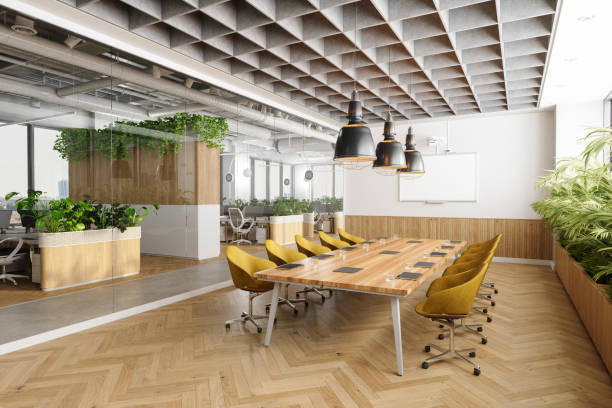Adapting Small Spaces into Efficient Professional Work Areas
Practical guidance for transforming compact rooms into functional, professional workspaces. This overview covers layout, ergonomics, lighting, acoustics, connectivity, security, equipment choices, hybrid workflows, boundaries, and basic taxation considerations for remote workers.

Small living spaces can be successfully converted into efficient professional work areas with thoughtful planning and modest investment. Whether you work remote full-time, split time in a hybrid model, or need a dedicated corner for focused tasks, the key is to prioritize ergonomics, reliable connectivity, and visual and acoustic separation from daily life. Proper equipment selection, layered lighting, and simple security measures help maintain productivity while preserving the comfort and function of the rest of your home.
Remote work and hybrid considerations
Remote and hybrid work patterns shape how a small workspace should function. If you alternate between office and home, prioritize flexibility: choose furniture that can be stowed or repurposed, and create a layout that supports both focused solo work and occasional video calls. Set clear temporal boundaries by designating core hours for deep work and communicating availability to household members. Hybrid arrangements also influence what equipment you need at home versus what you leave at the office, and may affect how you handle expenses or taxation related to a home workspace in your jurisdiction. Keep records of work-related purchases and consult local guidance for tax deductions.
Ergonomics and equipment for comfort
Good ergonomics are essential in small spaces where every posture counts. Position your monitor so the top third is at eye level and about an arm’s length away to reduce neck strain. Use an adjustable chair or seat cushion and consider a compact sit-stand desk or converter to alternate postures. Invest in a keyboard and mouse that fit your hand size, and add a laptop stand plus external keyboard when using a laptop as your main device. Equipment choices should balance comfort with the footprint they require: monitor arms, foldable desks, and under-desk storage can free floor space while maintaining an ergonomic setup that supports long-term productivity.
Lighting and acoustics to boost productivity
Lighting and acoustics dramatically affect focus and well-being. Maximize natural light where possible, placing the desk perpendicular to windows to avoid glare while enjoying daylight. Layer lighting with a bright overhead source and a task lamp with adjustable color temperature to reduce eye strain during evening work. For acoustics, use rugs, curtains, or portable acoustic panels to absorb reverberation in compact rooms. Consider headphones with noise-canceling features for open apartments or shared homes to maintain privacy during calls. Thoughtful lighting and sound treatment enhance concentration and make small workspaces feel more professional.
Connectivity and security essentials
Reliable connectivity is non-negotiable for most professional work. Position your router centrally or use a mesh Wi‑Fi system to avoid dead zones; if possible, use a wired Ethernet connection for critical devices to reduce latency and dropped calls. Secure your network with a strong password, WPA3 where available, and regular firmware updates. For data security, enable disk encryption, apply OS and app updates promptly, and use a reputable VPN when accessing sensitive work resources remotely. Physical security matters too—lockable storage or a small file cabinet can protect documents and equipment when you’re not present.
Defining boundaries and workspace layout
Creating mental and physical boundaries helps separate work from personal life in tight quarters. Use furniture, shelving, or a room divider to create a discrete workspace footprint within a room. Visual cues such as consistent desk styling, a small rug under the chair, or a dedicated plant can signal “work mode.” Keep frequently used items organized in labeled containers to minimize clutter and reduce time spent searching for equipment. For households with multiple people, coordinate schedules and designate quiet periods to preserve productivity during important calls or focused blocks.
Taxation, costs, and local services
When adapting a small space for professional use, consider how expenses and taxation may apply in your area. Home office tax rules differ by country and locality—some jurisdictions allow deductions based on a percentage of home space used exclusively for work, while others require a dedicated, regularly used room. Keep receipts for equipment purchases (desks, chairs, monitors) and document the workspace’s square footage if claiming any allowance. For installation or furniture needs, look for local services that offer small-space design, ergonomic assessments, or assembly. Pricing for furniture and local labor varies widely by market and provider, so compare options in your area and verify current rates before purchasing.
Conclusion Adapting small spaces into efficient professional work areas is achievable through intentional layout, attention to ergonomics, layered lighting, acoustic control, reliable connectivity, and clear boundaries between work and home life. Thoughtful equipment choices and simple security practices support sustained productivity and comfort. With modest adjustments and an eye toward flexibility, even limited square footage can become a functional, professional workspace suited to remote and hybrid work arrangements.





